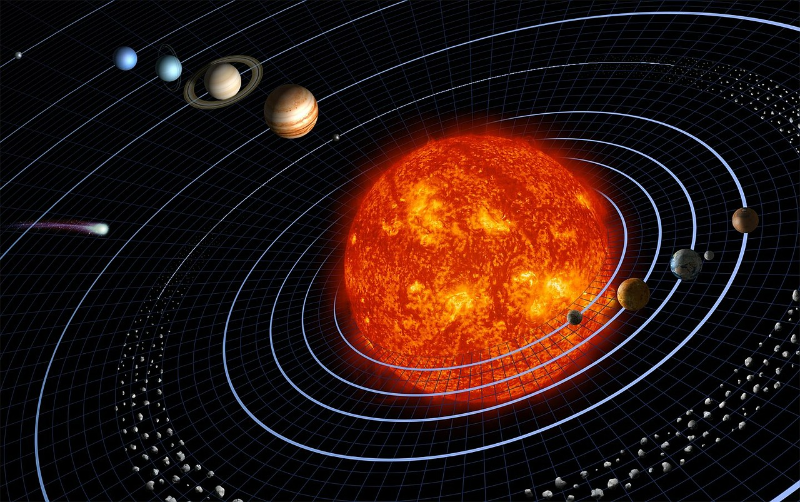Circular Orbits
The Solar System

Planets orbit the sun due to the sun's gravitational pull on them. While it's true that planets pull on one another, those influences are much smaller. We will ignore those interplanetary interactions in our discussions. Since the sun is so much more massive than any of the orbiting planets (it is almost half a million times more massive than earth), we will assume that the sun is stationary in spite of planets tugging on it. While this is a common assumption for such calculations, it should be noted that the wobble of the sun due to planetary gravitational influences is one of the primary methods of detecting extra-solar planets - or planets that orbit stars besides our own sun.
The general problem of orbital motion in which a planet's trajectory is guided by the pull of the sun, or some other central mass, leads to an elliptical orbit. However, since a circle is an ellipse with zero eccentricity, circular orbits are one class of orbit. We will focus on circular orbits because the math is much easier than the case of the elliptical orbit, and we can still learn some general principles from analyzing our results.
Consider our moon orbiting the earth. We know from our early chapter on fundamental forces, that there is a gravitational force that pulls the moon toward the earth and likewise an equal and opposite one that pulls the earth toward the moon. This means that both objects undergo acceleration according to Newton's second law.
While this is true, the mass of the moon is around 1% of earth's mass, which means that the earth's acceleration is only 1% of the moon's. Given this fact, it is common to assume that the earth in such situations is fixed in place, as if its acceleration is zero. We imagine the earth at the origin of a polar coordinate system with the moon moving around the origin in a circular path. Just keep in mind that this is not quite true, and yet these calculations will give us rather accurate results.
The bottom line is that the first time a physics student studies orbits, it is common to assume the central mass is fixed, and that the orbiting mass travels in a circular path. Those are two assumptions we will make here.
Moon's Orbit Around Earth
The force drawing the moon toward the assumed-fixed earth has a magnitude of where the 'r' in the denominator is measured from the center of mass of the moon to the center of mass of the earth. Recall that the universal gravitation constant is
Assuming that the gravitational force by the earth on the moon plays the role of a centripetal force acting on the moon, we can write:
In looking at this result there are a few things that we can learn.
- The first is that the mass of the moon doesn't affect its orbital period. This is true of orbital motion in general. We could in principle replace the moon with a baseball that is at the same distance and moving with the same velocity and it would track through space just the same. What we'd lose, however is the earth's tides since the gravitational force from the baseball wouldn't pull nearly the same on earth's oceans.
- There is a direct connection between the size of an orbit (its radius in this case) and the time it takes the orbiting body to go around, or the period. These two are linked by the laws of nature. This relationship was first noted by Johannes Kepler's third law in 1619.
- The only way to change the ratio on the right side of the equation is to have control over the gravitational constant (not an option), the value of pi (also not an option) or to change the central mass. For planets this central mass is the sun. For the moon, it is earth.